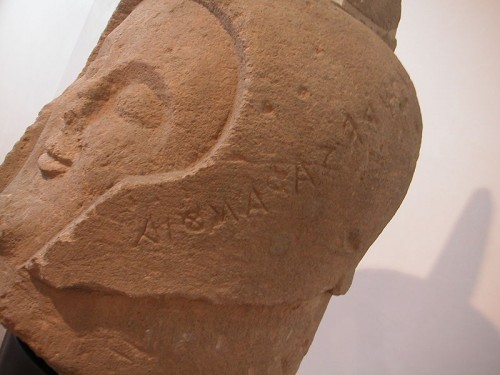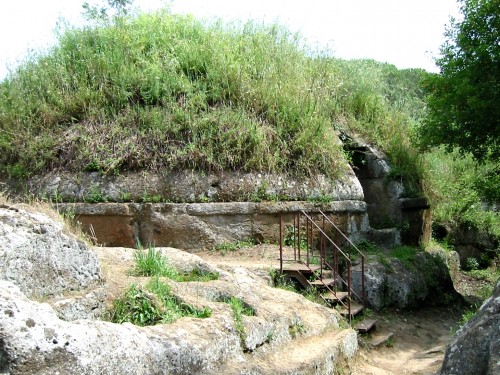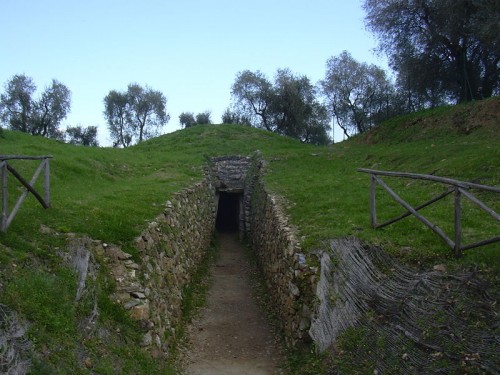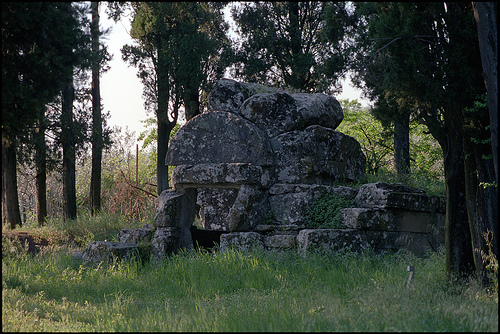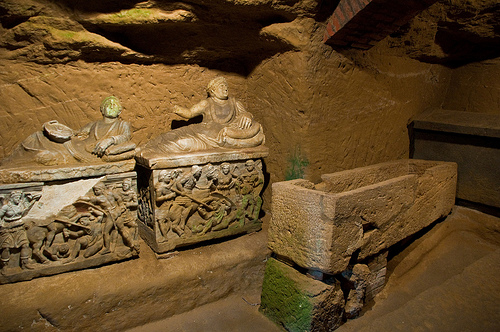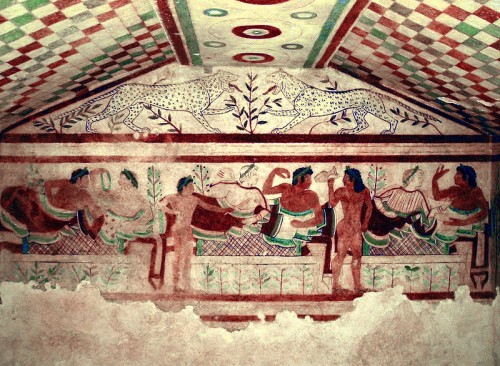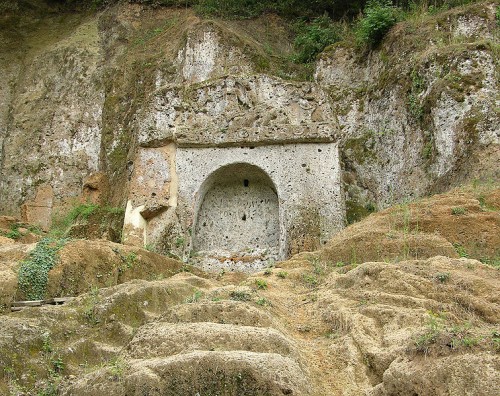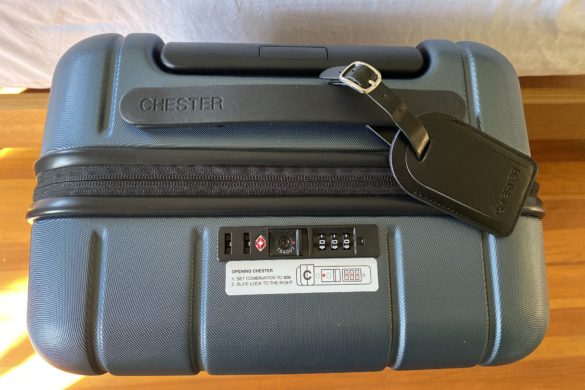We visit Italy—especially Tuscany—for the delicious food and wine, and the splendid historical art and architecture from the Romans and the Renaissance. The Italian countryside holds many treasures as well: ancient ruins from the mysterious Etruscans, the rulers of Italy before the Romans. Some of these well-preserved city walls and burial tombs date back to the 7thcentury B.C. Step back in time and see the jewelry, bronzes, and other artifacts from this still-undiscovered civilization at archaeological museums throughout Tuscany.
For some of the best places to find Etruscan ruins, visit these villages.
Orvieto
Orvieto was settled in the 8th or 9th century B.C. Because of its wealth from the bronzes and ceramics, it became the Etruscan center known as Velzna in the 6th century B.C. Orvieto is filled with about 1200 caves containing passages, quarries, and wells. You can explore these with one of the Orvieto Underground guided tours available from the Piazza Duomo, 24. For 5.50 euro and about an hour of your day, you will see two well shafts both 130 feet deep, painted walls, remains of the cement quarry, and how the Etruscans pressed olives with an ancient olive press.
You should also take a walk to the Strada della Stazione to visit the necropolis Crocifisso del Tufo. In the modern town, across from the popular Duomo, an old palazzo has been transformed into a museum for Etruscan artifacts. The Museo Claudio Faina e Museo Civico houses these ancient coins, vases, and bronzes.
Admission is 4.50 euro. From April to September, the museum is open daily from 9:30 AM to 6:00 PM. From October to March, the museum is open from Tuesday through Sunday from 10:00 AM to 5:00 PM.
Cerveteri
Cerveteri is only a short day trip from Rome and a great place to explore Etruscan ruins. The main necropolis in Cerveteri, Necropolis of Banditaccia, was built between the 9th and 3rdcenturies B.C. but these tombs are still not fully excavated. Archaeologists compare the way the Etruscans designed their tombs to the way an architect plans a city. This archaeological site is so vast (it spans about six miles) and impressive that it has been added to UNESCO’s World Heritage List.
Some of the tombs that you should view are the Tomba dei Rilievi. Built in the 4th century B.C., this tomb has numerous stuccoes on the walls depicting events, animals, and objects that were used in everyday life. In the Tomba dei Scudi e delle Sedie, you will find beds with pillows that have been carved from the tufa rock, which were for the men and women buried there. In the main piazza of Cerveteri, an old castle has been transformed into an Etruscan ruins museum: Museo Nazionale Cerite. Definitely check it out, especially since admission is free! The museum is closed on Mondays.
Vetulonia
During the time of the Etruscans, Vetulonia was one of the most important cities in Maremma. Located in the valley of Bruna, this city was established in the 7th century B.C. The necropolis that was discovered in this area exposed iron rods with a double-headed helix in the center as well as other riches.
Cortona
The beautiful town of Cortona has been a popular setting for many writers. It’s easy to see why: Cortona is perched on the hillside overlooking Lake Trasimeno, and it is home to well-preserved Etruscan ruins. In the town, visit the Museo dell’Accademia Etrusca and marvel at the majestic artifacts from thousands of years ago. This museum displays a gold fibula, a bronze Snout with a hooked beak and sharp tongue, an Etruscan bronze chandelier, and other artifacts and documents.
Venture into the countryside and walk through the excavated tombs of Grotta di Pitagora, del Sodo, and Sergardi. You can also locate the defensive walls that once guarded Cortona.
Chiusi
Chiusi was one of the most powerful cities during the Etruscan age. Therefore, it only makes sense that some of the best Etruscan ruins are in this ancient city. Chiusi is home to the Museo Nazionale Etrusco on Via Porsenna, one of the best Etruscan collections in the Mediterranean. It has numerous ceramics, sculptures, terracotta cinerary urns, and vases. After you visit the museum, go out into the countryside to see the tombs: Tomba della Pellagrina, Tomba della Scimmia (take note of the wall paintings portraying Etruscan social life), and Tomba del Granduca.
Tarquinia
Tarquinia, like Cerveteri, has numerous impressive tombs left behind by the Etruscans as well as a museum with an extensive collection of artifacts. The Museo Nazionale Tarquinense is located in the 15th century Palazzo Vitelleschi. It contains Etruscan art and objects dating back between the 6th and 3rd centuries. It also houses stone sarcophagi, Corinthian and Attic ceramics, coins and jewelry, bronze mirrors with Etruscan etchings, and the Two-Winged Horses.
About twenty minutes away from the museum is the Monterozzi Necropolis, spanning six kilometers. Despite the large amount of tombs, only a fifteen are open for viewing (sometimes only one at a time). These tombs are notable for their painted walls that reveal aspects of life, death, and religious beliefs. Some of the popular painted tombs are the Tomba dei Giocolieri and the Tomba dei Tori. If you’re going during the summer months, you might want to take a taxi to these tombs because the sun can become extremely hot and uncomfortable.
Sovana
In the Fiora River Valley is the quiet little village of Sovana. You will find the traditional Etruscan tombs: Tomba del Sileno, Tomba del Sirena, Tomba Pisa, and Tomba Pola. But you will also discover one of the most incredible mausoleums at the Tomb of Ildebranda, which is at the foot of the village. This tomb is part of the Citta del Tufo Archaeological Park. (If you want to visit another archaeological park, take a half hour drive south to the Vulci Archaeological Park.)
However, the most extraordinary part of Sovana is the “sunken roads” nearby. These roads, or via cave, were carved through the volcanic rock, making forty-foot walls, which are now covered in moss. It is a truly magical experience to wander through these roads while contemplating how these mysterious Etruscans contrived these architectural masterpieces.
What is your favorite place to go to find Etruscan ruins? Museums or tombs? What are your favorite types of ruins?
Written by : Laura Photo Credits : Nixdorf / Almare / GDelhey / Xavier de Jaureguiberry / PhillipC / AlMare / SidVics

